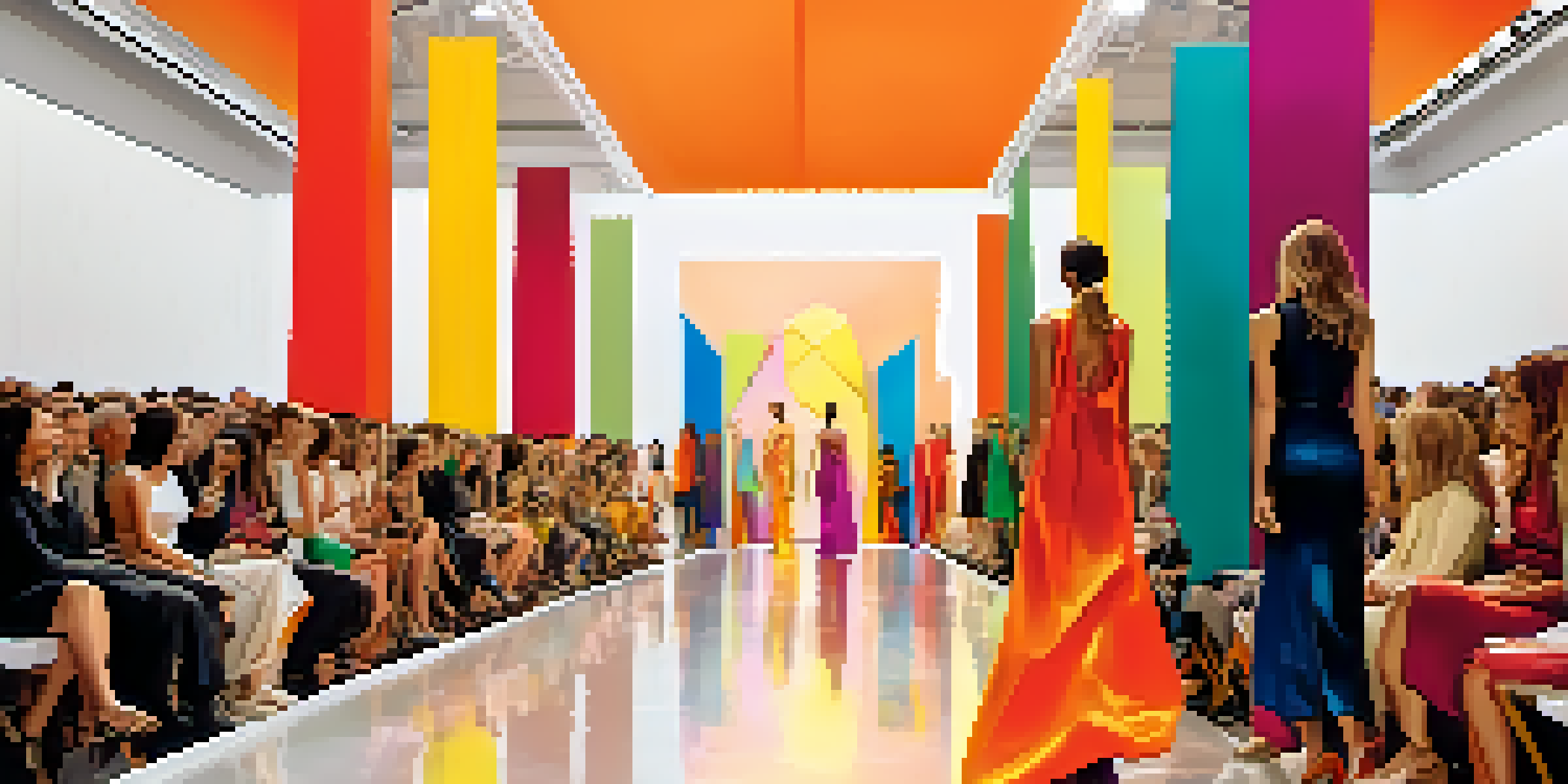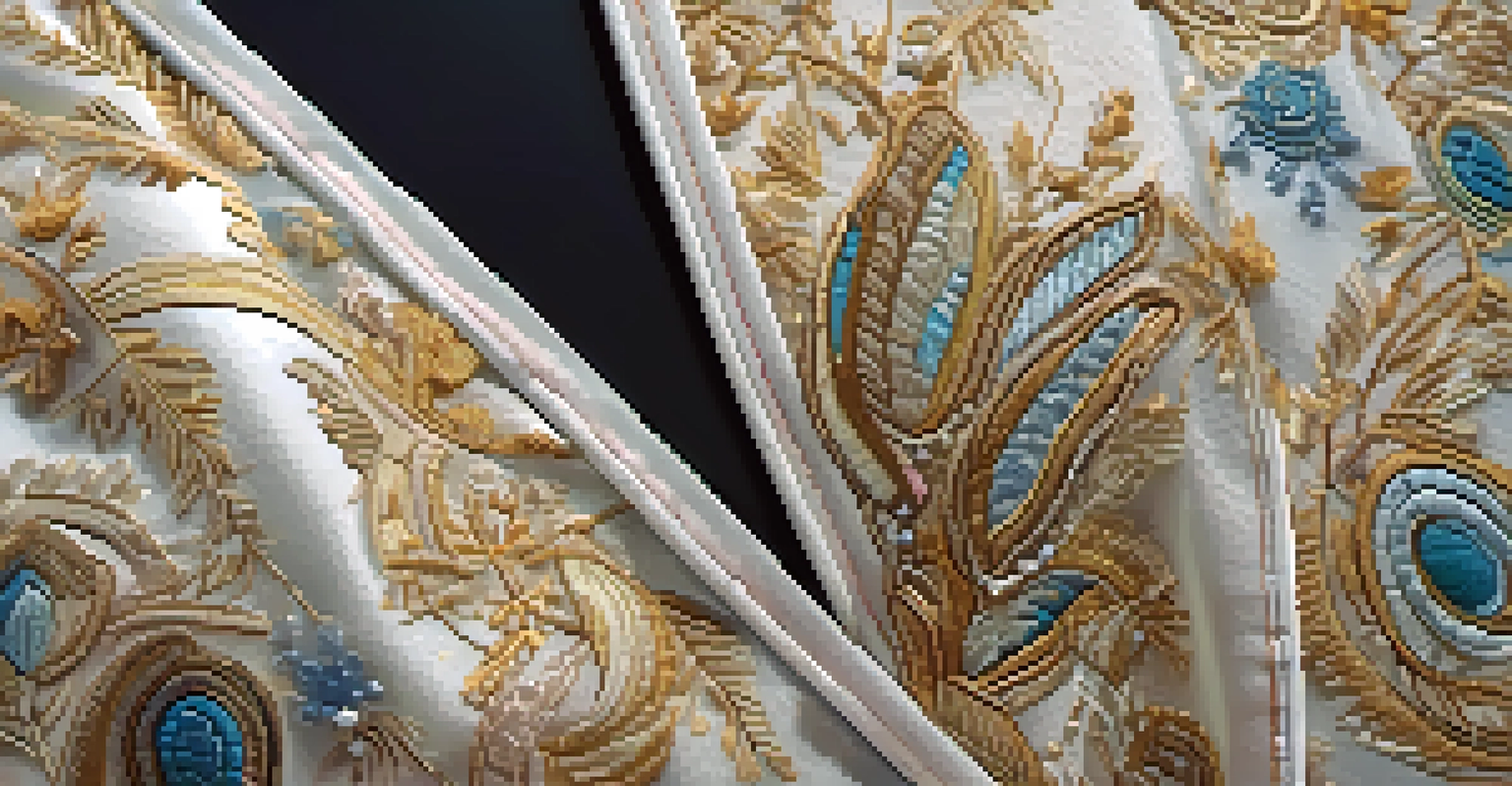The Intersection of Fashion and Contemporary Art Today

Fashion as a Canvas: The Artistic Influence
Fashion has long been influenced by art, but today's designers take it a step further. They are increasingly using their collections as a canvas to express artistic ideas. For instance, designers like Alexander McQueen have showcased runway shows that are nothing short of living art installations, merging textiles with visual storytelling.
Fashion is the armor to survive the reality of everyday life.
This intersection allows for a unique dialogue between the two fields, where garments become not just items of clothing but also pieces of art. Artists like Yayoi Kusama have collaborated with brands like Louis Vuitton, creating collections that embody her signature polka dot motifs. These collaborations illustrate how fashion can encapsulate broader artistic movements.
Related Resource
By blurring the lines between fashion and art, designers invite consumers to engage with their work on a deeper level. This fusion not only enhances the aesthetic experience but also fosters a greater appreciation for the craftsmanship involved in both disciplines.
Art as Inspiration: Fashion Designers' Creative Muse
Contemporary artists are also a significant source of inspiration for fashion designers. The vibrant colors and bold patterns found in modern art often translate into striking clothing designs. For example, the work of abstract artists like Piet Mondrian has inspired collections that reflect his geometric style in both cuts and colors.

Fashion weeks around the globe frequently feature collections that pay homage to artistic movements, from Impressionism to Surrealism. Designers often draw parallels between the emotions evoked by a painting and the feelings they wish to convey through their garments. This reciprocal relationship enhances both fashion and art, generating fresh ideas and trends.
Fashion as Artistic Expression
Today’s designers use their collections as a canvas, merging fashion with artistic ideas to create pieces that are both wearable and visually compelling.
Ultimately, the influence of art on fashion showcases how creativity can transcend mediums. When designers tap into the rich narratives of contemporary art, they enrich their designs and offer consumers a form of wearable art that sparks conversation.
Cultural Commentary: Fashion as Art in Society
Fashion and contemporary art often serve as mirrors to society, reflecting current events and cultural shifts. Designers use their platforms to comment on social issues, much like contemporary artists do through their work. For instance, the rise of sustainable fashion has been a key topic influenced by the environmental movement in art.
Art is not what you see, but what you make others see.
Collections that address topics such as gender identity, body positivity, and cultural heritage are becoming more prevalent. Designers like JW Anderson and brands like Chromat embrace these themes, creating pieces that challenge societal norms and spark dialogue. This powerful form of expression showcases fashion's role as a conduit for change.
Related Resource
By intertwining cultural commentary with artistic expression, both fields engage audiences in meaningful ways. This synergy not only elevates fashion but also fosters a greater understanding of pressing issues within contemporary society.
The Role of Technology in Art and Fashion Fusion
Technology has revolutionized both the art and fashion industries, creating new avenues for expression and creativity. From digital prints to augmented reality experiences, designers and artists are leveraging tech to push boundaries. For example, innovative fashion shows now incorporate virtual reality, allowing viewers to experience collections in entirely new ways.
On platforms like Instagram, artists and designers can showcase their work to a global audience instantaneously. This digital presence fosters collaboration, allowing for unique partnerships that might not have been possible before. The rise of digital art has also influenced fashion, leading to collections that explore the aesthetics of the digital age.
Art Inspires Fashion Innovation
Contemporary artists significantly influence fashion designers, leading to collections that reflect modern art's vibrant colors and bold patterns.
As technology continues to evolve, it will undoubtedly shape the future of fashion and art. This relationship not only enhances creative possibilities but also invites consumers to engage with both industries in revolutionary ways.
Exhibitions and Runway Shows: Art Meets Fashion
Exhibitions that blend fashion and contemporary art are becoming increasingly popular, showcasing the works of both disciplines side by side. Museums and galleries are hosting shows that highlight the artistic elements of fashion design, allowing visitors to appreciate the craftsmanship involved. For instance, the Costume Institute’s Met Gala often features themes that celebrate both fashion and art.
Runway shows themselves have transformed into visual spectacles, often resembling art installations more than traditional fashion presentations. Designers create immersive experiences that captivate audiences, encouraging them to see fashion as a multifaceted art form. The boundary between the runway and the gallery continues to blur, creating dynamic experiences for attendees.
Related Resource
These events not only elevate the status of fashion within the art world but also challenge perceptions of what constitutes art. By showcasing the creativity inherent in both fields, they foster a deeper appreciation for the artistry involved in clothing design.
Collaborations: The Power of Artistic Partnerships
Collaborations between fashion designers and contemporary artists are a hallmark of this intersection, resulting in innovative and boundary-pushing collections. These partnerships often lead to limited-edition pieces that reflect a unique blend of styles. For instance, the collaboration between artist Jeff Koons and Louis Vuitton brought together high fashion and pop art in a vibrant, eye-catching collection.
These creative alliances not only benefit the brands involved but also elevate the artists' visibility in the fashion world. By merging their distinct visions, both parties can explore new concepts and push each other to new heights. This synergy is a testament to the power of collaboration in fostering creativity.
Collaborative Trends in Fashion
Partnerships between fashion designers and contemporary artists result in innovative collections that resonate with consumers and elevate both fields.
Moreover, these partnerships often result in collections that resonate with consumers on a personal level. When art meets fashion, it creates a narrative that customers can connect with, transforming shopping into an engaging experience.
The Future of Fashion and Art: Trends to Watch
As we look ahead, the fusion of fashion and contemporary art shows no signs of slowing down. Emerging trends indicate a growing interest in sustainability, inclusivity, and technology-driven innovation. Designers are increasingly embracing eco-friendly materials and ethical practices, reflecting a broader movement within contemporary art that values social responsibility.
Additionally, the influence of social media continues to shape the way consumers interact with both industries. Platforms like TikTok and Instagram allow for instant feedback and engagement, encouraging designers and artists to experiment with their work. This democratization of art and fashion enables diverse voices to emerge, enriching the landscape.

Ultimately, the future of fashion and art is bright, filled with possibilities for collaboration and innovation. As these two fields continue to evolve together, they will undoubtedly inspire new generations of creators and consumers alike.